“With such a range of styles, Zweigelt is a variety we will be seeing a lot more of in the UK. And gladly so, because it provides conclusive evidence that Austrian wine today is very much a multi-trick pony, bounding from the stables, with lots to show the world,” writes Keay.
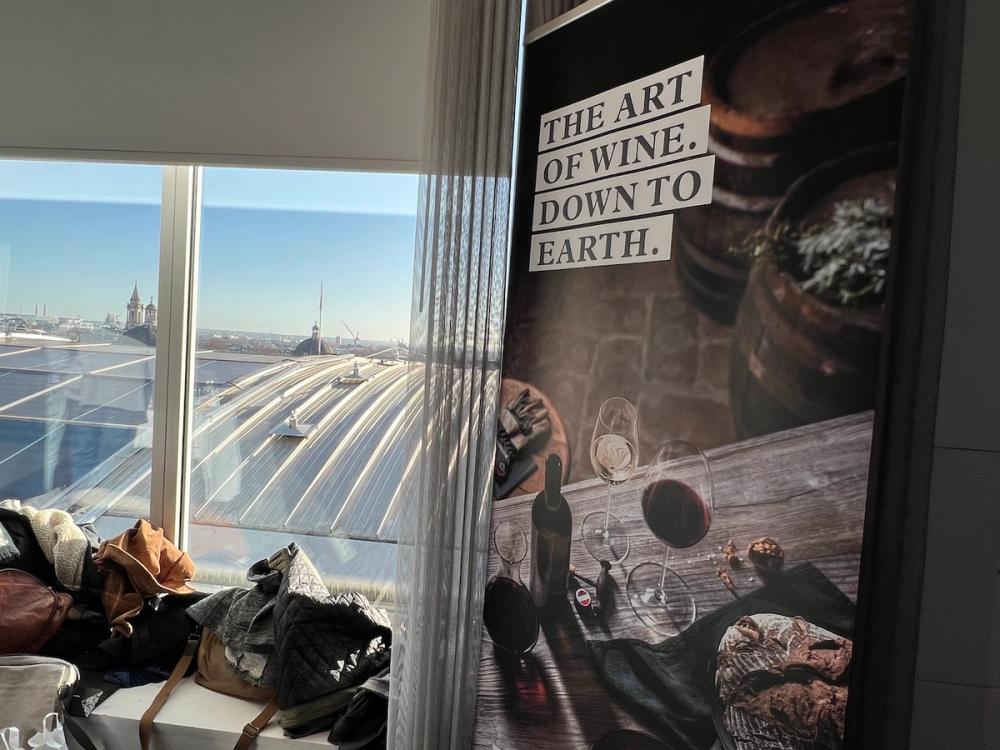
A great venue for discovery: Austrian Wine tasting, February 6, 2023, Science Museum, London
My main worry on arriving at the first official Austrian Wine tasting in London for three years was that this might be a one trick pony affair. I’m as much of a fan of Grüner Veltliner as the next person – even young Grüner, which can frankly be an acidity bomb – and there are good reasons why it is Austria’s best planted and best known variety. But, as I looked at the myriad flute-shaped bottles stretching across the tasting room and noted that half the day’s Masterclasses were on regions known for their premium Grüner (Kamptal and Kremstal) I did wonder.
Yet as I found myself reaching for a bottle and asking the nice people at Umathum (famed for its impressive, hefty reds from Burgenland) “Um, is this the Lindenblattriger?” I realised my fears had been quite unfounded. The fact an Austrian producer is making wine from this locally recovered white variety (aka Harslevelu, grown widely across the border in Hungary’s Tokaji region) alongside Pinot Noir, Zweigelt and St Laurent tells you everything you need to know about Austrian wine today.
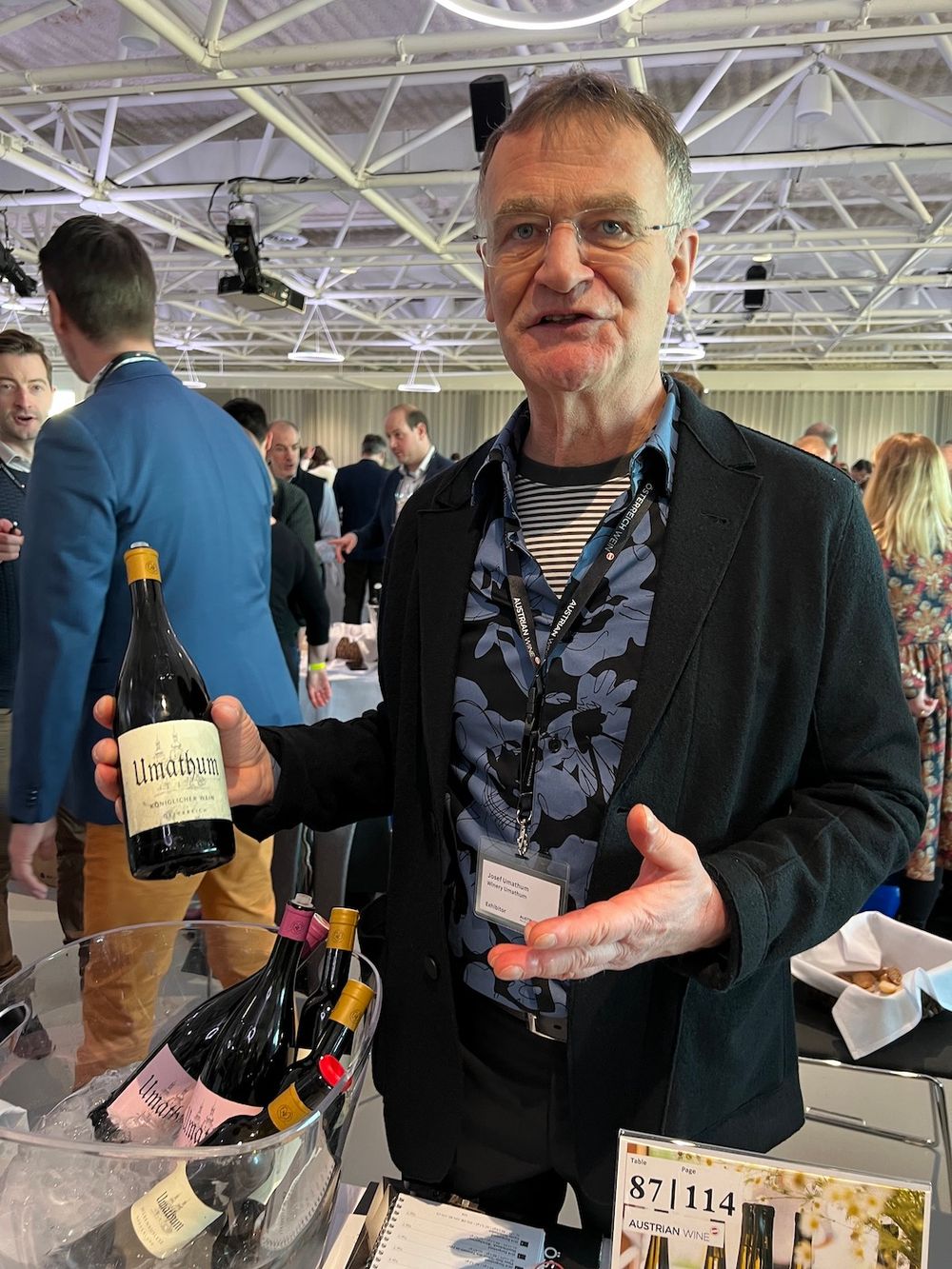
Josef Umathum: adding historical grapes varieties to his portfolio
“There’s a huge amount of diversity, choice and value in Austria right now and it is these things that makes it so interesting,” says Chris Yorke, CEO of Austrian Wine, who says the UK market is now pretty much close to the top of the organisation’s target list. “People are surprised in particular at the quality-price ratio of aged Rieslings and Grüners and at our reds, in particular Zweigelt and Blaufränkisch which can be Pinot Noir-ish or made in a much heavier style. There really is a lot to discover.”
And this tasting was a great place to do that. Over 100 producers from across Austria were present, showing around 600 wines in the same great venue Austrian Wine selected back in 2020 – the Science Museum’s Illuminate, just down the road from my childhood home so full of great memories of investigating moon rocks and looking over the scale model of the Apollo 11 rocket. This venue – with its large tasting room and great views across to the V&A, the Brompton Oratory and beyond – seemed to me the perfect place to start making new memories, albeit of a non Gru V vinous sort.
And regional representation here was wide too. Although most of Austria’s wineries are in Niederosterreich (Lower Austria, with 27,160 ha of vines), quite a few wineries were showing from Burgenland on the Hungarian border, and from Steiermark (Styria), adjacent to Serbia.
And although Austria is rightly known for its white wines, this tasting showed that Austrian reds really are singing these days, with some fantastic Blaufränkisch specialists – Moric, Kopfensteiner – some great St Laurent specialists (Zantho and amongst its vast range of other wines, Umathum) – and no shortage of producers specialising in Austria’s most planted red, Zweigelt including also Umathum, whose delicious age-worthy Cuvee Heideboden Burgenland 2018 is a stunning blend of all three varieties, plus a touch of Cabernet Sauvignon.
So lots to discover but which producers stood out, aside from these, of course?
My top 10 Austrian producers from the tasting

Bründlmayer
One of Austria’s best known producers, famed for its classy Grüner Veltliners and Rieslings from Kamptal. The whole range was tasting pretty well with the Riesling Ried Zobinger Heiligenstein 2021 Kamptal DAC and the GV Langenlois Alte Reben 2021 Kamptal DAC standing out in particular. But the star here for me was the Sekt Austria Reserve Brut Rosé Sommelier Edition, a delicious NV equal blend of Zweigelt, St Laurent and Pinot Noir which just works so well: disgorged in 2019, with RS 10.3g/l this is a generous wine, with suggestions of strawberry and white flowers. Mega moriesh. (imported by Bancroft Wines)
Weszeli
At the adjacent table, Langenlois-based winery Weszeli – organic and in the process of converting to biodynamic – had a similarly distinctive range of GVs and Rieslings but again it was the sparklers that sparkled. The Pet Nat Zweigelt “We Love Pet Nat” NV a blend of 85% Zweigelt and 15% Cabernet Franc is lovely and fresh with just RS 2 g/l and a pleasing 10.5% ABV whilst its white counterpart We Love Pet Nat checks in at just RS 1 g/l but 12.5% ABV – a blend of five grapes including GV, Riesling and Pinot Blanc, this is wonderfully fresh, with apple and pear notes supported by generous but not excessive acidity. A Pet Nat for those who might otherwise be suspicious of the style. (Bancroft Wines)
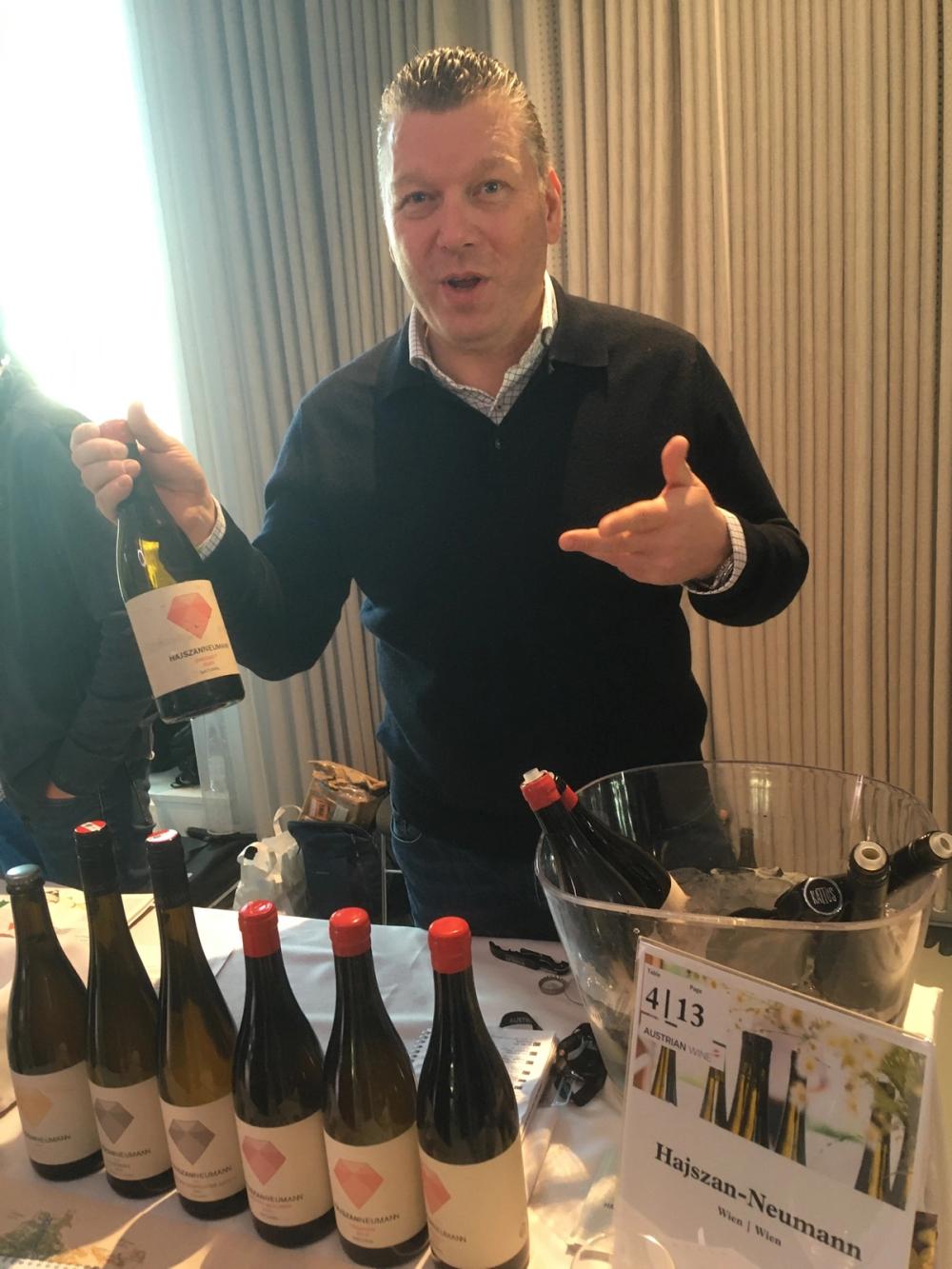
Fritz Wieninger showing wines from the heart of Vienna
Hajszan-Neumann
From the heart of Vienna – Grinzing, at the foot of the Nussberg – this biodynamic producer makes wines from vineyards owned by the architect Heinz Neumann and what a joy they are. The Wiener Gemischter Satz Nussberg 2021 GS DAC is a great introduction to the range but it was the three low intervention Weinland Natural Wines that caught my palate. The GV Natural 2021 sees the Grüner Veltliner grapes spend three and a half months on the skins before bottling to make an orange wine with great expression; the Zweigelt Natural 2020 is very dry and has great expression reflecting its ageing in a concrete egg, whilst the Traminer Natural 2019, with skins aged in amphora is surprisingly tannic but shows great character. (Bancroft Wines)
Loimer
Back to Langenlois for one of its true class acts. Loimer’s reputation rests on its GV and its Riesling but also its sparkling wines and it was the Sekt Austria Reserve Brut Rosé NV that grabbed my attention. A blend of 77% Zweigelt with the remainder split between St Laurent and Pinot Noir this NV’s base wine is from previous years so there is great complexity and richness here, with rose petals, strawberry and a hint of cassis in this well balanced wine. (Liberty Wines)
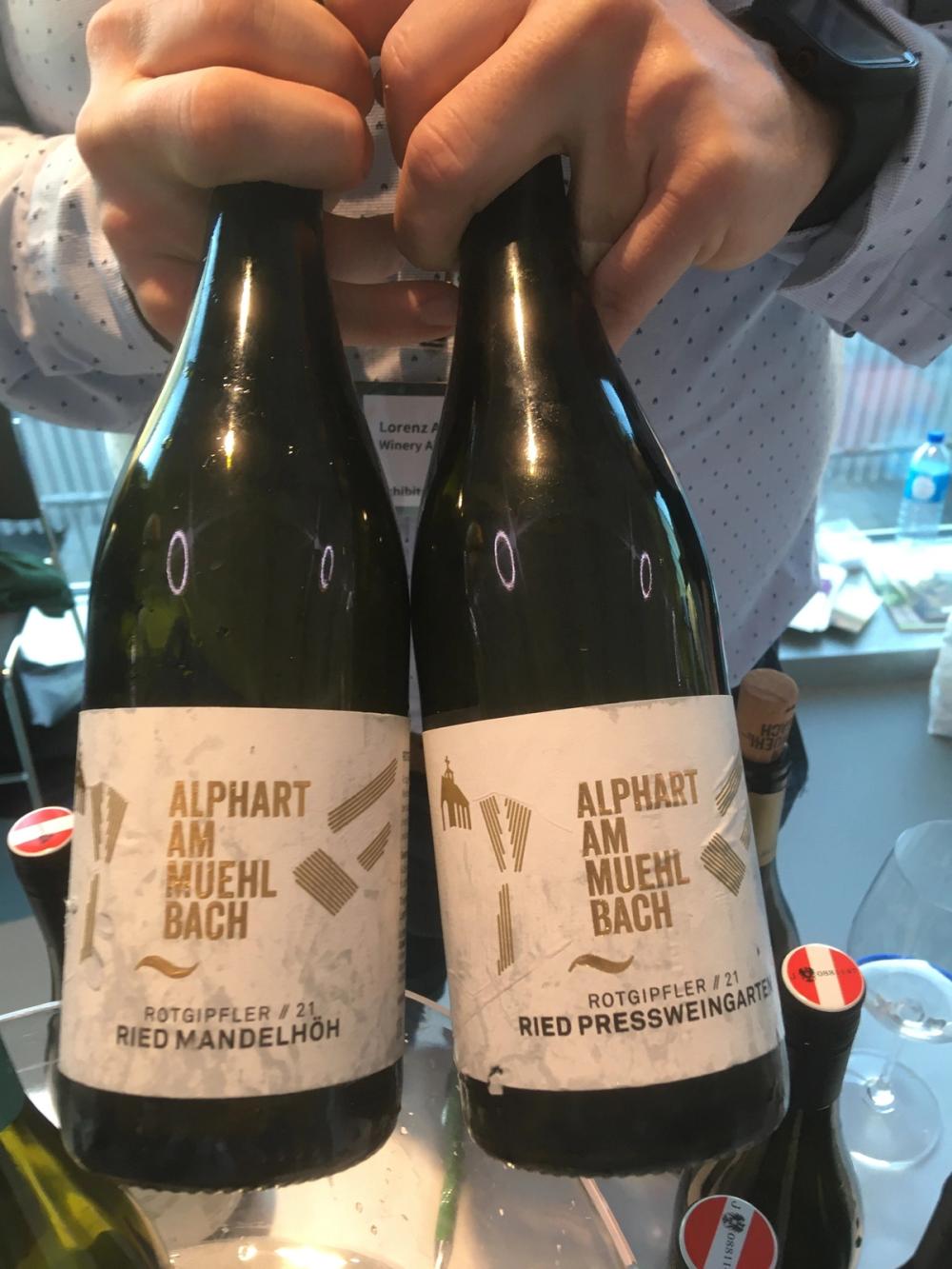
Alphart am Muhlbach
Part of my self-given remit during this tasting was to hunt down some Rotgipfler, the relatively rare aromatic white variety indigenous to the Gumpoldskirchen district of the Thermenregion, so called for the red tinge of its vine leaves – and now believed to be a natural crossing between Traminer and Roter Veltliner. I found a great example which dates back to 1762, (so hardly a newcomer) the Rotgipfler Ried Pressweingarten 2021 which is quite rich and full-bodied, with 14% alcohol and RS 4g r/s. Undergoing spontaneous fermentation in large wooden barrels, this has wonderful expression and character, with typical pear, almond and saline-spice characters showing through.
It was interesting to taste this alongside the Zierfandler Ried Otzler 2021, the variety with which it is often blended; also quite aromatic with a wide flavour profile, this has a similar texture to Chenin Blanc but fuller bodied. The Alphart Rotgipfler was very different from that shown here by another Thermenregion producer, Biegler, which was even more rounded and generous with RS 6.4gl, but Alphart’s had better balance and energy. (Unrepresented in the UK)

Lex Langmann
This, the only winery here from West Styria – around a one hour drive east of Klagenfurt – was a real surprise. Although Styria is best known for its very distinctive Sauvignon Blanc the real pull for me here were the wines made with the very local, late ripening Blauer Wildbacher variety, estimated to make up just 1% of Austria’s wine plantings. The variety is made into Schilcher, a distinctive dark, dry rosé which Langmann – family owned since 1746 – makes in a variety of styles; pink wines here make up 65% of the total, with the rest all white. My favourites were the delicious Sekt Schilcher NV, a moreish strawberry-charged sparkling wine with nice balance and 8 g r/s and the complex, saline, delicate Schilcher Klassik Weststeiermark DAC 2021, a serious food rosé with lots of character and elegance. (Unrepresented)
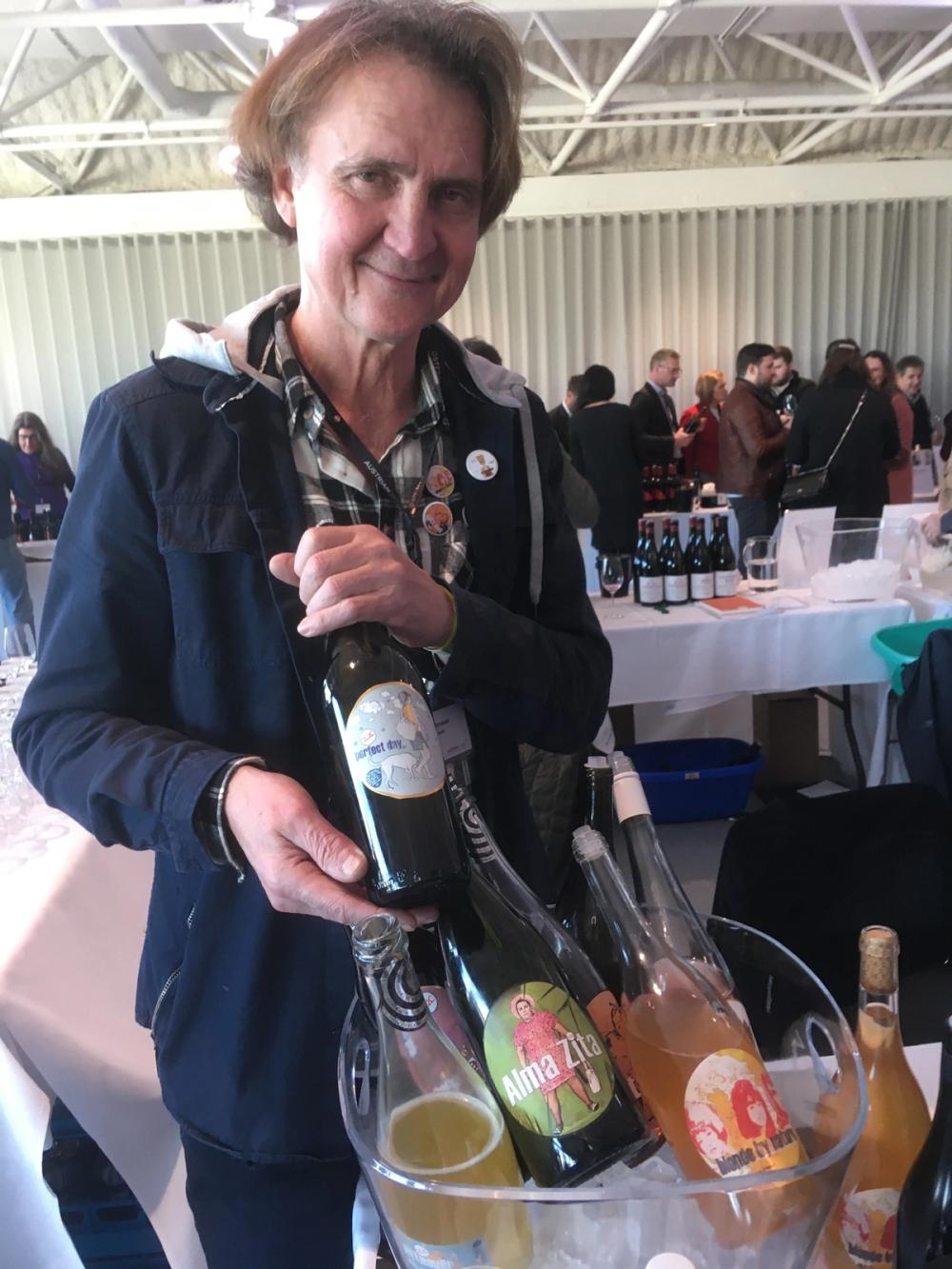
Gerhard Pittnauer
Pittnauer
“My aim is to make wines with an artistic approach,” says Gerhard Pittnauer as he pours the first of his highly distinctive range of wines made in his Burgenland winery, which includes the Cuvee Blonde by Nature 2021 (made with five different white varieties), Rosé Dogma 2021 (a pink Blaufränkisch made to show that “rosé wine can be a serious wine”), Best Friend 2021 (Blaufränkisch) and Vom Dorf (St Laurent). I’m not normally a fan of natural wine but these are great, clean, fun and fresh wines, many made with old vine grapes and, as Gerhard Pittnauer says, “very much alive”. My favourite was Perfect Day, a beguiling white blend of Muscat Ottonell and Gelber Muskateller. Moreish and delicious. (Clark Foyster Wines)
Artisan Wines – Franz Schneider
Last year the UK trade saw a number of events organised by the Neusiedlersee (Burgenland) DAC association highlighting Zweigelt’s ability to shine in medium bodied, juicy, fruit-driven wines which can be served chilled but also in more serious, oak-aged wines with ageing potential. Artisan Wines’ Neusiedlersee DAC Reserve 2017 is very much in the second category; benefitting from two years of ageing and open top fermentation, this is an impressive, full and characterful wine, blackberry and cassis on the palate, from a producer close to the Hungarian border. (Stone, Vine & Sun)
Hannes Reeh
At the other extreme, the cheerful cherry-driven Hannes Reeh Zweigelt 2021 Neusiedlersee DAC is a classic picnic wine, light to medium bodied, cheerful and uncomplicated, supported by tobacco and vanilla notes. (Unrepresented)
Kummer
Midway, with spicy notes and lots of juicy fruit flavours, lie wines like Kummer’s Zweigelt Ried Zeiselberg 2013 – also serious but playful, medium bodied, with lots of complexity and elegance, suggesting a Cabernet Franc with its moreishness. (Unrepresented).
With such a range of styles, Zweigelt is a variety we will be seeing a lot more of in the UK. And gladly so, because it provides conclusive evidence that Austrian wine today is very much a multi trick pony, bounding from the stables, with lots to show the world.
Austrian Wine is a commercial partner of The Buyer. To discover more about them click here.
































